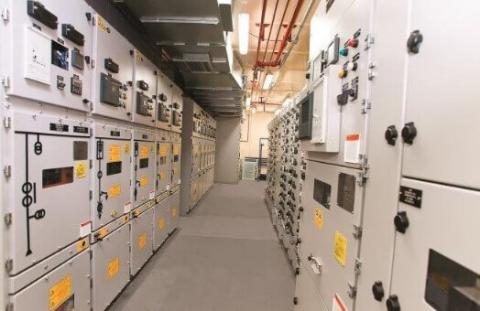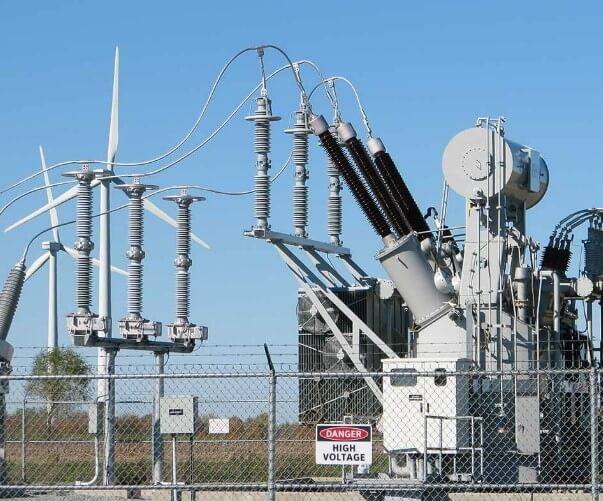
In the fast-paced and complex world of modern railways, maintaining a stable and reliable power supply is critical to ensure the safety and efficiency of operations. One of the most significant challenges faced by the railway industry is protecting sensitive electrical equipment from power surges, which can occur due to a variety of factors, including lightning strikes, sudden grid fluctuations, or even equipment malfunctions. This is where power surge protection comes into play, safeguarding everything from signaling systems to power supplies for locomotives and stations.
When considering the best method to protect railway systems, there are two main approaches: passive and active power surge protection. Each method has its advantages and limitations, making it important for railway operators and engineers to understand their differences and how they apply to different components of the railway network. In this post, we’ll dive into a comparison of passive versus active power surge protection in railways, exploring how each works and their respective benefits in the context of railway operations.
Understanding Power Surge Protection
Power surges, also known as voltage spikes, are brief and significant increases in voltage that can severely damage electrical equipment. These surges can originate from external sources such as lightning, as well as from internal causes like sudden load changes, short circuits, or switching operations. Without proper surge protection, electrical components in the railway system can be compromised, leading to costly repairs, downtime, or safety hazards.
Power surge protection devices (SPDs) are designed to either absorb or divert excess voltage to prevent damage to sensitive equipment. The primary goal is to prevent the sudden influx of voltage from reaching crucial systems, ensuring that trains continue to operate smoothly and safely. Let’s break down the differences between passive and active power surge protection and how each is applied within the railway industry.

GET IN TOUCH
In a hurry? Call us at 276-285-3841
Passive Power Surge Protection
Passive power surge protection relies on components that react automatically to power surges without any active intervention. These devices are often simple, durable, and require minimal maintenance once installed. The most common form of passive surge protection includes surge arresters, which are designed to absorb or redirect excess voltage when it exceeds a set threshold.
How Passive Protection Works:
-
Surge arresters typically consist of non-linear resistors, metal-oxide varistors (MOVs), or gas discharge tubes (GDTs). These components are able to withstand the surges and shunt excessive voltage away from the electrical circuit.
-
When a surge occurs, the MOV or other materials within the arrester absorb the surge energy and channel it away from sensitive equipment, diverting the excess voltage to the ground.
-
The device essentially “clamps” the voltage to a safe level by allowing the current to flow away from critical equipment, reducing the likelihood of electrical failure.
Advantages of Passive Protection:
-
Simplicity and Cost-Effectiveness: Passive surge protection devices are often less expensive and simpler to install and maintain compared to active systems.
-
No Power Source Needed: These devices do not require any external power supply, making them ideal for remote or decentralized parts of the railway infrastructure.
-
Reliability: Once installed, passive systems tend to last longer with fewer moving parts that require regular servicing, making them a solid option for long-term power surge protection.
Limitations of Passive Protection:
-
Limited Response Time: Passive devices react to surges after they occur, meaning that some sensitive equipment may still suffer damage if the surge is too severe.
-
Wear and Tear: Over time, surge arresters can degrade, especially if exposed to multiple large surges, reducing their effectiveness. Regular monitoring and replacement may be necessary.
-
No Real-Time Monitoring: Passive surge protection systems typically do not offer real-time feedback or monitoring, which can make it difficult to detect when a device has been compromised.
Active Power Surge Protection
In contrast to passive systems, active power surge protection uses more sophisticated technology to actively monitor and manage power surges in real time. These systems are designed to detect power fluctuations and respond instantly to prevent damage. Active surge protection systems often incorporate advanced sensors, microprocessors, and switching components to react to voltage spikes with higher precision.
How Active Protection Works:
-
Active systems continuously monitor the power supply for any fluctuations or surges in voltage. As soon as a surge is detected, the system can quickly activate mechanisms to either divert or suppress the surge before it reaches the equipment.
-
These systems may include components such as solid-state surge protectors, which can detect and respond to surges faster and more efficiently than passive systems. They can also adapt their protection thresholds dynamically depending on the severity of the surge.
-
Active protection often includes real-time diagnostic features, alerting operators to surge events and the condition of the protection system.
Advantages of Active Protection:
-
Faster Response: Active systems are typically much faster in detecting and responding to power surges, providing better protection for sensitive equipment.
-
Adaptability: Active surge protection systems can adjust to varying levels of surge intensity, offering tailored protection for different types of electrical components.
-
Real-Time Monitoring: Many active systems come with monitoring features that provide real-time data on surge events, system performance, and the condition of the protection devices.
-
Minimized Downtime: By responding to surges instantly, active systems can minimize the risk of downtime, which is crucial in high-speed and time-sensitive environments like railways.
Limitations of Active Protection:
-
Higher Initial Cost: Active systems tend to be more expensive to install and maintain due to their complexity and the advanced technology used.
-
Dependence on Power Supply: Unlike passive systems, active protection devices require a continuous power supply to operate effectively, which can be a challenge in isolated railway locations or in cases of power outages.
-
Complexity: These systems can be more complex to install and require specialized knowledge to maintain, which could lead to higher operational costs.

GET IN TOUCH
In a hurry? Call us at 276-285-3841
Which System is Better for Railways?
Both passive and active power surge protection have their place in the railway industry, and the choice between the two depends on several factors, including the specific needs of the railway infrastructure, the level of surge protection required, and budget constraints.
For critical infrastructure such as signaling systems, train control systems, and power supplies for locomotives, an active power surge protection system is likely the best option due to its speed, adaptability, and ability to monitor and respond in real-time. These systems are designed to prevent expensive downtime and ensure the safety of passengers and goods, making them invaluable in high-priority applications.
For less critical components or areas where the risk of severe power surges is lower, passive surge protection can offer a more cost-effective and reliable solution. Surge arresters in substations, overhead electrification systems, and auxiliary equipment can benefit from passive protection, providing long-term durability with minimal maintenance requirements.
Conclusion
In the context of railways, ensuring that the electrical systems are protected from power surges is essential to maintaining a safe and reliable service. Both passive and active power surge protection systems offer distinct advantages, with passive systems excelling in simplicity, reliability, and cost-effectiveness, while active systems shine in their responsiveness, adaptability, and real-time monitoring capabilities.
Ultimately, the best choice of power surge protection depends on the specific needs and priorities of the railway operation. Whether opting for the durability of passive systems or the cutting-edge technology of active systems, safeguarding critical infrastructure from power surges is vital for the continued success of the railway industry.
Products We Offer
Swartz Engineering strives to provide top-quality products to achieve our customer's needs. Our products include:
- Type 76 DC Relay
- Type 82 DC Relay
- Swartz Engineering’s Type 64 Ground Relay
- Type 32 Reverse Current Relay
- Type 150 DC
- CSM Shield Monitor
- Metal Oxide Surge Arrestors
- Transducers
- MVIS SL Slim-line Contactor
- Fully-tested Power Control Rooms
- Swartz Engineering’s Portable Substations
For nearly half a century, we have proudly led the industry in ensuring safety and efficiency. Swartz Engineering is a trusted family-owned company dedicated to providing top-notch power distribution solutions for the electrical industry. Contact us today!
